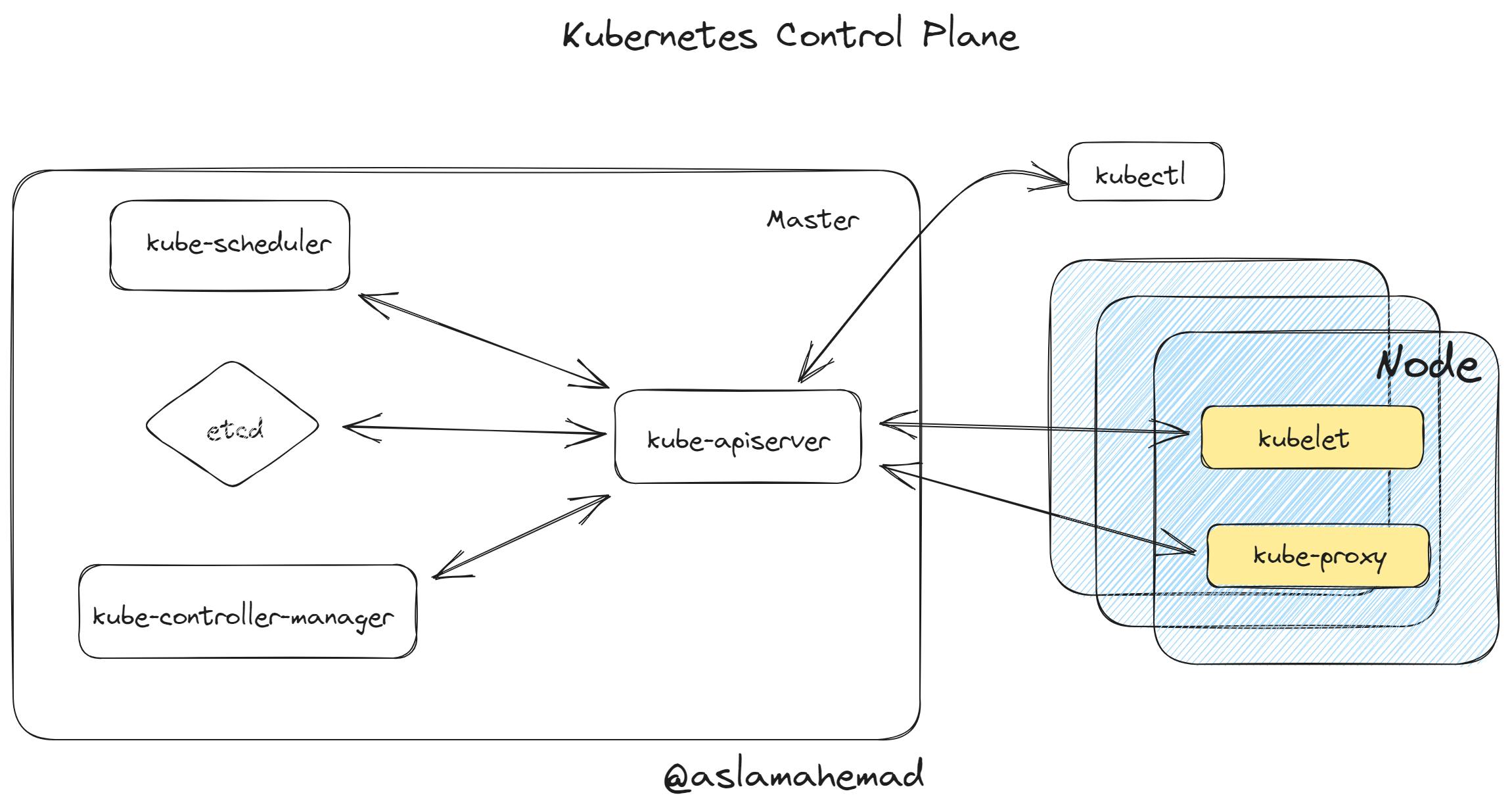In a Kubernetes cluster, the control plane is responsible for managing and controlling every component of the cluster. It ensures that the cluster is in the desired state by receiving and processing data about internal cluster events, external systems, and third-party applications. In this blog, we will explore the control plane in Kubernetes, its components, and its role in managing the cluster.
Components of the Control Plane
The control plane consists of several key components that work together to manage the Kubernetes cluster:

kube-apiserver: This component provides an API that serves as the front end of the Kubernetes control plane. It handles external and internal requests, determines their validity, and processes them. The kube-apiserver can be accessed through the
kubectlcommand-line interface or other tools likekubeadmand via REST calls.kube-scheduler: The kube-scheduler is responsible for making decisions about which nodes should run specific pods. It considers factors such as resource requirements, quality of service requirements, and other constraints when making scheduling decisions. The kube-scheduler ensures that pods are distributed across the cluster in an efficient and balanced manner.
kube-controller-manager: The kube-controller-manager is a control loop that monitors and regulates the state of the Kubernetes cluster. It receives information about the current state of the cluster and objects within it, and sends instructions to move the cluster towards the desired state. The kube-controller-manager includes several controllers, such as the node controller, replication controller, and endpoint controller, each responsible for managing specific aspects of the cluster.
etcd: etcd is a distributed key-value store that is used to store the cluster's configuration and state data. It provides a reliable and highly available data store for the control plane components. The etcd cluster is responsible for storing information about the cluster's nodes, pods, services, and other resources.
Role of the Control Plane
The control plane is an essential element of every Kubernetes cluster. It handles all the operations in the cluster and defines and controls the cluster's configuration and state data. The control plane components work together to ensure that the cluster is in the desired state and that pods are scheduled and managed effectively. The control plane performs the following tasks:
Deployment, management, and maintenance of containerized applications: The control plane configures and runs the deployment, management, and maintenance of the containerized applications running in the cluster. It ensures that the desired number of pods are running and handles scaling, rolling updates, and other application management tasks.
Monitoring and control of cluster components: The control plane monitors the health and status of the cluster's components, including nodes, pods, and services. It detects and handles failures, initiates rescheduling of pods, and maintains the overall health and availability of the cluster.
Handling of cluster-wide events: The control plane receives and processes cluster-wide events, such as changes to the cluster's configuration or the addition/removal of nodes. It makes decisions based on these events and takes appropriate actions to maintain the desired state of the cluster.
Conclusion
The control plane is the powerhouse of a Kubernetes cluster, responsible for managing and controlling every component of the cluster. It consists of several key components, including the kube-apiserver, kube-scheduler, kube-controller-manager, etcd. The control plane ensures that the cluster is in the desired state, handles the deployment and management of containerized applications, monitors and controls cluster components, and handles cluster-wide events. Understanding the control plane is crucial for effectively managing and operating a Kubernetes cluster.

